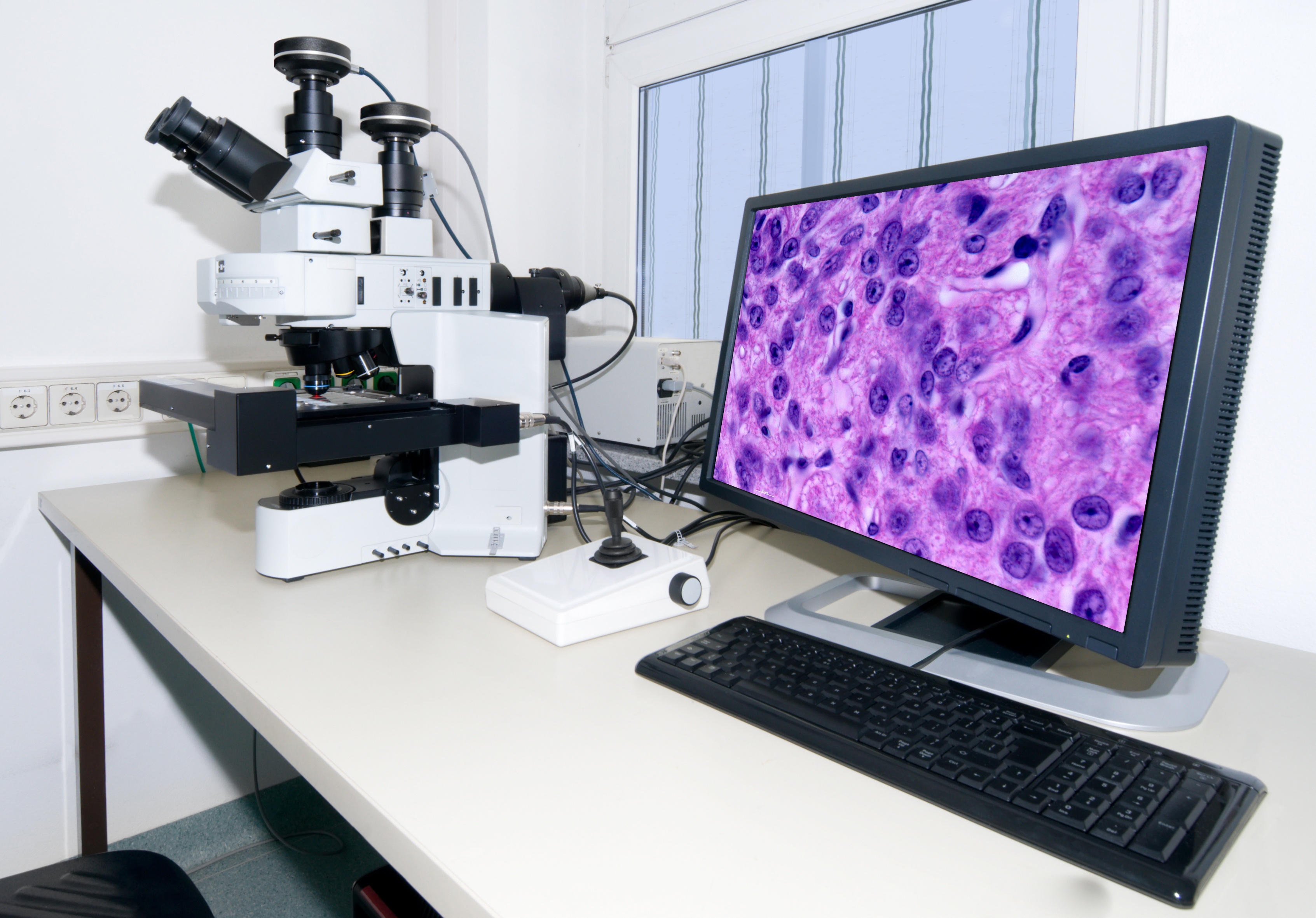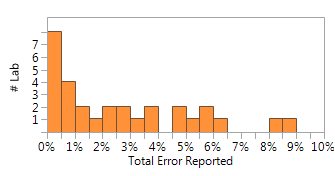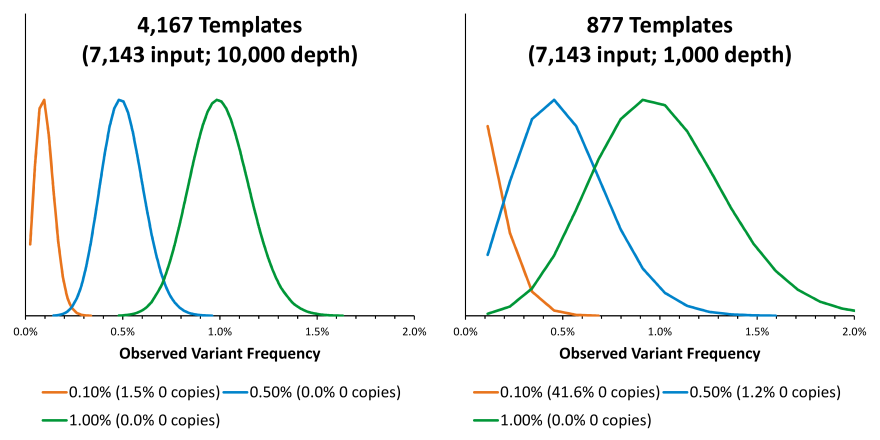Choose your Article Focus | NGS | Molecular & Serology
Extracting Formalin-fixed, paraffin-embedded (FFPE) nucleic acids for NGS
Category: NGS
Posted by
Yves Konigshofer, PhD on Mar 14, 2017 12:00:00 AM
In the course of patient care, formalin-fixation and paraffin-embedding (FFPE) of biopsy tissue samples are routinely performed, where these samples can be analyzed by histology and archived to link the sample with clinical long-term follow-up. With the development of advanced NGS-based oncology gene panels, it is becoming increasingly important to consider pre-analytic variables when extracting nucleic acids from FFPE-treated samples. This post covers frequently asked questions (FAQs) around the extraction of nucleic acids from FFPE samples for downstream NGS analysis.
0 Comments Click here to read/write comments
Highlights from the Precision Medicine World Congress
Category: FDA, clinical genomics, ngs validation, NGS, cancer, EGFR
Posted by
Russell Garlick, PhD on Feb 15, 2017 12:00:00 AM
On January 23-25, 2017 the Precision Medicine World Congress was held in Mountain View, California. The PWMC conference kicked off with Dr. Keith Yamamoto, Vice Chancellor for Science and Policy and Strategy UCSF, with Dr. Robert Califf, FDA Commissioner in a “fireside chat” format. Dr. Califf has been with the FDA for 2 years, has served as Commissioner for 11 months, but has resigned as of January 20th 2017. One of his important parting thoughts presented was how the FDA has been re-energized by the >21st Century Cures Act to hire new scientific talent to implement the President’s Precision Medicine and Cancer Moonshot plans.
0 Comments Click here to read/write comments
Introducing A New Reference Material for KRAS Molecular Testing
Category: EGFR
Posted by
Matt Ryder on Jan 31, 2017 12:00:00 AM
During my time spent in academia, I studied in a laboratory focused on molecular switches. Although cellular signaling cascades appear as nothing more than incomprehensible spiderwebs when viewed graphically, the concept is very straightforward: certain molecules can act to regulate cellular processes by functioning like electrical switches. Just as light switches in your home complete or break a circuit to control the flow of electrical current, molecular switches such as Ras GTPases (PDF) control whether certain signals can elicit a cellular response.
0 Comments Click here to read/write comments
Multiplexed Reference Materials as Controls for Cardiomyopathy Diagnostic Next-Generation Sequencing
Category: clinical genomics, NGS
Posted by
Dale Yuzuki on Dec 13, 2016 12:00:00 AM
Hypertrophic Cardiomyopathy (HCM) is a disease where the heart muscle is enlarged and a significant cause of sudden cardiac death, and is frequently asymptomatic. HCM is commonly caused by a mutation in one of nine heart muscle genes that comprise the sarcomere, and occurs at a prevalence of about 1 in 500 in the general population. HCM is the leading cause of cardiac death in young athletes in the United States. Clinical genetic testing for mutations in the HCM-related genes has been ongoing for over a decade; the GeneTest.org database reveals 105 laboratories offering some version of genetic testing. While knowledge of prevalent pathogenic variants are available, the majority of variants remain private (that is, unpublished and not widely available). The move to NGS-based gene panels for HCM testing has lead to new challenges for test development, validation and routine quality control due to the inherent scarcity of samples, the cost of including numerous single mutations from these individual samples, and the lack of these materials for laboratories without a long history of testing.
0 Comments Click here to read/write comments
Clinical Laboratories: You Are Not Alone. (Part II)
Category: QC Challenges, NGS, ctDNA, reference materials
Posted by
Matt Ryder on Dec 7, 2016 12:00:00 AM
Previously, we wrote about some of the Quality Control challenges that clinical laboratories performing Next Generation Sequencing (NGS) face towards ensuring their assays are safe and effective for guiding medical management decisions. Reliable access to high quality reference materials is necessary to help overcome these challenges; however, it is not sufficient. Insights that reference materials provide into the health of an NGS assay are only as good as laboratories’ ability to use their QC data effectively. With limited time and resources to collect, organize, access, and analyze QC metrics, laboratories may frequently rely on reference materials as binary indicators of Pass/Fail: As long as the expected endpoint results are obtained, an assay is considered to be performing well. The drawback of this approach is that it is reactive, rather than proactive: A sufficient number of failures must occur within a given timeframe before a troubleshooting investigation is performed. By the time a problem is recognized, resources have been wasted and turnaround times (TAT) delayed; in some cases, fidelity of patient results may even have been put at risk. Additional time and costs are then incurred as the investigation proceeds. Specimen analysis by NGS yields a wealth of information in addition to endpoint variant calls that is indicative of assay performance. Data such as nucleic acid quantity and quality at different steps throughout the workflow (PDF) and sequencing library characteristics are generated every time a reference material is tested. However, these data must be carefully tracked and trended to allow use as highly informative QC parameters. For clinical laboratories whose primary focus is on patient testing and reporting, granular QC metrics may not be captured and reviewed as part of routine test monitoring.
0 Comments Click here to read/write comments
Clinical Laboratories: You Are Not Alone.
Category: NGS, reference materials
Posted by
Matt Ryder on Nov 8, 2016 12:00:00 AM
Since the introduction of the GS20 in 2005 by 454 Life Sciences, Next Generation Sequencing (NGS) has found many applications in clinical diagnostics. As a result of this transition from the long-held gold standard, Sanger sequencing, the primary challenge for clinical laboratories has shifted from data acquisition to ensuring these tests are safe and effective for guiding medical management decisions. Many laboratories struggle to gain a thorough understanding of the analytic performance characteristics of their NGS tests. The difficulty arises from the fact that these assays are comprised of highly complex, fragmented workflows, and have many different intended uses. However, across the various practices currently used for NGS assay development, validation, and performance monitoring, there is a common goal: results must be as accurate, precise, and consistent as possible.
0 Comments Click here to read/write comments
Reference Materials for Your Unique Reproducibility Needs
Category: FDA, SeraSeq, clinical genomics, NGS, reference materials
Posted by
Matt Ryder on Oct 12, 2016 12:00:00 AM
If you took a university introductory statistics course, you may have learned the distinction between accuracy and precision. It may likely have been presented with an archery analogy, where ‘Accurate’ was represented by arrows loosely clustered around the target’s bull’s-eye, ‘Precise’ was shown as a tight grouping displaced from the center, and ‘Accurate and Precise’ was depicted as what every archer aims for, a tight grouping directly at the bull’s-eye. Suddenly, words that are used interchangeably in everyday conversation took on dramatically different meanings.
0 Comments Click here to read/write comments
What lessons for liquid biopsy have been learned from fetal aneuploidy testing?
Category: liquid biopsy, NIPT, ctDNA
Posted by
Russell Garlick, PhD on Sep 30, 2016 12:00:00 AM
Non-invasive prenatal screening (NIPS) is currently offered in over 80 countries, covering over 80 million annual births, with an estimated volume of over one million screening tests performed annually. First offered in 2011, there has been rapid adoption of these genomic tests in the marketplace.
0 Comments Click here to read/write comments
FDA-AACR Liquid Biopsies in Oncology Drug and Device Workshop
Category: FDA, clinical genomics, NGS, cancer, LDT, ctDNA, reference materials
Posted by
Yves Konigshofer, PhD on Aug 8, 2016 12:00:00 AM
The presentations during the FDA-AACR Liquid Biopsies in Oncology Drug and Device Development Workshop on July 19, 2016 included several important pieces of information that will likely guide the development of assays and their review by the FDA.
0 Comments Click here to read/write comments
IVD Guidance for NGS Manufacturers
Category: FDA, clinical genomics, NGS, LDT, reference materials
Posted by
Russell Garlick, PhD on Jul 14, 2016 12:00:00 AM
After 17 months of deliberations since its first open meeting February 20, 2015 on NGS IVD assay oversight, the U.S. Food and Drug Administration (FDA) issued DRAFT guidance for Stakeholders and FDA staff. The document “Use of Standards in FDA Regulatory Oversight of Next Generation Sequencing (NGS)-Based In Vitro Diagnostics (IVDs) Used for Diagnosing Germline Diseases” was published online on July 6, 2016. This document (PDF located here) is for analytical validity and not for clinical validation.
0 Comments Click here to read/write comments












